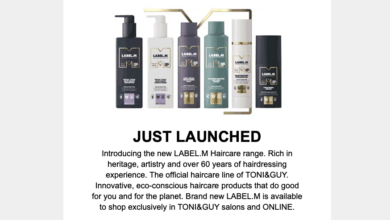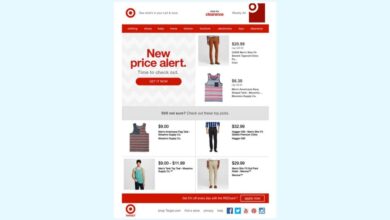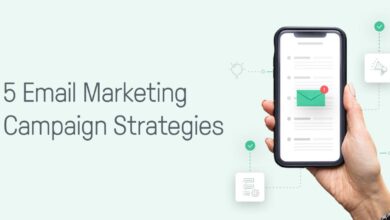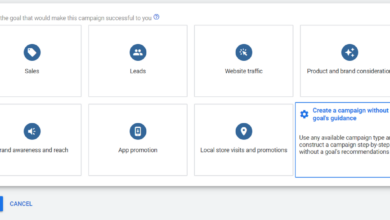
How Often Should You Send Promotional Emails?
How often should you send promotional emails? This crucial question impacts your marketing success, affecting everything from customer engagement to brand perception. Understanding the ideal frequency isn’t a one-size-fits-all answer. Different business types, customer segments, and email content all play a role. This deep dive explores the complexities, from optimizing schedules to tailoring messages, ultimately revealing the key to maximizing your email marketing ROI.
We’ll analyze various strategies, from daily blasts to monthly newsletters, and examine their effectiveness across different customer groups. Learn how to segment your audience, personalize your emails, and leverage automation to nurture leads while avoiding spam filters. The goal? To provide you with a comprehensive framework to craft an email strategy that drives results and strengthens your customer relationships.
Frequency and Timing
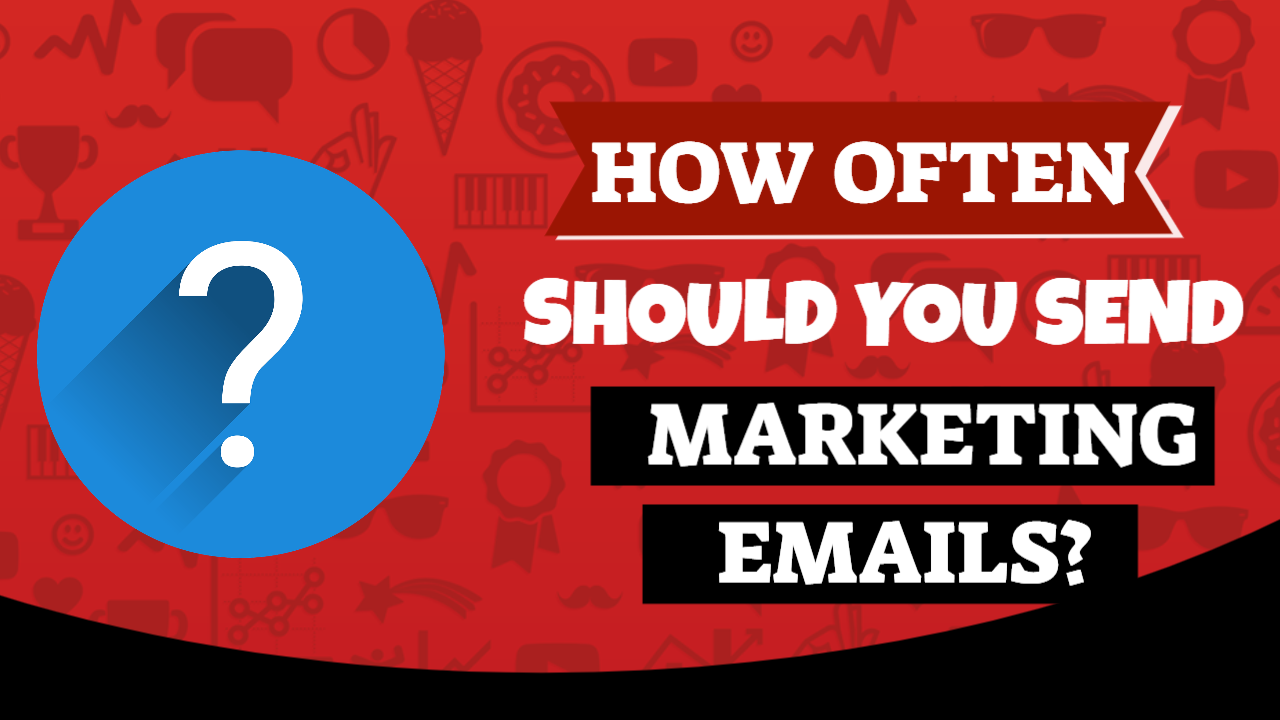
Finding the sweet spot for promotional email frequency is crucial for maximizing engagement and minimizing frustration. A consistent, well-timed approach can significantly boost open rates, click-throughs, and ultimately, conversions. Understanding your audience and tailoring your strategy accordingly is key to success.Email frequency isn’t a one-size-fits-all solution. Different business models, customer segments, and engagement metrics demand unique strategies.
This exploration delves into the optimal email frequency for various businesses, the pros and cons of different schedules, and how to adapt your approach based on real-time data.
Optimal Email Frequency by Business Type
Email frequency depends heavily on the type of business. E-commerce businesses, for example, often benefit from more frequent communication to promote sales and highlight new products. SaaS companies, on the other hand, might focus on providing valuable content and updates less frequently but with a greater emphasis on building relationships.
Email Campaign Schedules
Different email campaign schedules offer various advantages and disadvantages. Daily emails can maintain top-of-mind awareness, but can also lead to inbox overload. Weekly emails offer a good balance between frequency and personalization, while monthly campaigns can be ideal for showcasing major announcements or seasonal promotions.
Figuring out the perfect frequency for promotional emails is tricky, but understanding your audience is key. A SWOT analysis, like the one detailed in right way conduct swot analysis , can help you pinpoint your strengths and weaknesses in relation to your audience’s needs. This will help you tailor your email campaigns to resonate with your customers, leading to more effective and less spammy communication, ultimately dictating how often you should be sending them.
- Daily emails can keep your brand in front of customers. They’re ideal for businesses focused on immediate sales or updates, like daily deals or real-time inventory alerts. However, too much daily communication can lead to subscribers unsubscribing or marking your emails as spam.
- Weekly emails strike a good balance. They allow for regular communication without overwhelming subscribers. This approach is suitable for businesses that want to share industry insights, new blog posts, or product updates in a consistent, but not overly frequent, manner. It’s great for building long-term relationships.
- Monthly emails are best for significant announcements, promotions, or seasonal campaigns. They allow for a more substantial message and can be effective for driving major sales events.
Email Frequency by Customer Segment
Tailoring your email frequency to different customer segments is vital for maintaining engagement. New subscribers, for example, require a more measured approach, while loyal customers can tolerate more frequent communication, especially regarding exclusive offers.
| Customer Segment | Email Frequency | Justification |
|---|---|---|
| New Subscribers | Weekly or bi-weekly | Initial contact and gradual onboarding. |
| Loyal Customers | Bi-weekly or monthly | Building relationships and providing exclusive offers. |
| Inactive Customers | Monthly or less frequent | Triggering re-engagement strategies. |
Adjusting Email Frequency Based on Engagement Metrics
Monitoring customer engagement metrics, like open rates, click-through rates, and unsubscribe rates, provides valuable insights into email effectiveness. If engagement is low, adjusting frequency might be necessary. Conversely, high engagement might justify more frequent communication.
Figuring out how often to send promotional emails can be tricky, but it’s crucial for keeping your audience engaged. Think about your audience and their behavior. For instance, if you’re targeting a younger demographic, you might consider testing different frequencies to see how often they engage with your content, and you could also leverage platforms like TikTok ads to boost your reach and frequency.
Ultimately, the best approach is to experiment and track the results to optimize your email marketing strategy for maximum impact.
Factors Influencing Email Frequency Decisions
Several factors play a role in determining the ideal email frequency. These include:
- Business type: E-commerce often necessitates more frequent communication than SaaS businesses.
- Campaign goals: Sales promotions require a different approach than building brand awareness.
- Customer segment: Different segments have different needs and expectations.
- Customer engagement metrics: Open and click-through rates, and unsubscribe rates are crucial indicators.
- Industry best practices: Researching your specific niche can offer guidance.
- Competition: Observing competitors’ strategies can offer insights.
Email Content and Value
Crafting engaging promotional emails is crucial for capturing attention and driving conversions. Beyond frequency, the content itself plays a vital role in determining success. Tailoring email content to the specific value proposition of each campaign ensures recipients feel genuinely connected to the message, rather than simply being bombarded with irrelevant information.Effective email marketing is less about constant messaging and more about providing consistent value.
This means going beyond simple announcements and delving into relevant, helpful information that resonates with your audience. High-value content establishes your brand as a trusted resource, fostering loyalty and driving genuine engagement.
Tailoring Frequency Based on Value Proposition
Understanding the nature of your email campaign is key to determining the optimal frequency. A simple announcement, like a new product launch, might warrant a single email blast, while a series of product updates over several months demands a different approach. A lead nurturing campaign requires a more deliberate, gradual approach. The value proposition dictates the frequency.
Figuring out the perfect email frequency for promotions can be tricky. It’s not a one-size-fits-all answer, but sending too few emails might miss potential customers, while too many can annoy them. Ultimately, the best approach depends on your audience and your specific goals. If you’re looking to optimize your website for search engines, understanding the top 5 website CMS for SEO is key.
the top 5 website CMS for SEO can help you significantly improve your online presence. Experiment with different schedules and track your results to find what works best for your brand. Ultimately, consistency is key, but finding that balance between engagement and irritation is the ultimate promotional email frequency goal.
If the email offers substantial value, a more frequent schedule can be justified.
Types of Promotional Emails and Optimal Sending Schedules
Different types of promotional emails require distinct sending strategies. This table Artikels the optimal schedule for different email categories:
| Email Type | Optimal Sending Schedule | Rationale |
|---|---|---|
| Announcements (e.g., new product launches) | Single, focused email | Maximizes impact by delivering all necessary information in one concise message. |
| Product Updates | Bi-weekly or monthly emails, depending on update frequency. | Provides regular updates without overwhelming subscribers with too much information too often. |
| Special Offers (e.g., discounts, promotions) | Targeted and timely; potentially more frequent during sales periods. | Creates urgency and encourages immediate action, while ensuring the offers are relevant to the subscribers’ interests. |
Providing Valuable Content to Avoid Spam
Emails perceived as spam are often filled with promotional material lacking any real value. To avoid this, focus on providing helpful, relevant information. This might include insightful articles, exclusive industry reports, or helpful tips related to your product or service. A balance between promotion and valuable content is key to maintaining subscriber engagement. A company known for providing useful content builds trust and credibility.
Comparing Promotional and Informational Emails
Promotional emails, when done well, can be highly effective. However, informational emails, if tailored to a specific audience need, can cultivate deeper relationships. They establish a company as a thought leader, which in turn can drive more robust and meaningful engagement with the brand. Promotional emails focus on immediate action, while informational emails foster long-term relationships. Effective campaigns blend both approaches.
Using Email Frequency to Nurture Leads and Build Relationships
Email frequency is a crucial tool in nurturing leads and building relationships. By sending targeted emails with valuable content, businesses can guide prospects through the sales funnel. The emails should provide information at the right stage of the buyer’s journey. Early-stage leads might benefit from general product information, while later-stage leads might receive case studies or exclusive content.
Using email frequency to nurture leads allows for a personalized experience, ultimately strengthening the customer relationship.
Customer Segmentation and Personalization: How Often Should You Send Promotional Emails

Nurturing customer relationships goes beyond just sending emails; it’s about understanding individual needs and preferences. Personalization, when done effectively, transforms generic messages into targeted interactions, leading to higher engagement and conversions. Segmentation plays a crucial role in this process, allowing you to tailor your approach to specific customer groups. This approach not only improves your email open and click-through rates but also enhances the overall customer experience.Effective segmentation and personalization are key to avoiding your emails ending up in the spam folder.
Customers are more likely to engage with messages that feel relevant and valuable to them. By understanding your audience, you can send the right message at the right time, fostering loyalty and building stronger customer relationships.
Customer Segmentation Based on Email Interaction
Understanding how customers interact with your emails provides valuable insights. Segmenting your audience based on their engagement allows you to tailor your communication strategy for maximum impact.
| Segment | Email Interaction Criteria | Example Actions |
|---|---|---|
| High Engagement | High open rates, click-through rates, and reply rates. | Send more frequent promotional emails, offer exclusive content or discounts. |
| Low Engagement | Low open rates, click-through rates, and reply rates. | Send more introductory content, or simpler product information. Reduce sending frequency to avoid overwhelming. Consider a different email subject line. |
| Abandoned Cart | Customers who added items to their cart but didn’t complete the purchase. | Send reminder emails with special discounts or incentives. Offer different shipping options. |
| Recent Purchases | Customers who recently purchased from your store. | Send follow-up emails with recommendations based on their past purchases. Offer loyalty programs. |
Personalized Email Content and Frequency
Tailoring email content to specific segments ensures that your messages resonate with individual customer needs. The frequency of your emails can be directly tied to this personalization.
- Product Recommendations: For customers who frequently browse a specific product category, send targeted emails featuring similar items or related products. This frequency can be higher for these segments.
- Personalized Discounts: Offer exclusive discounts to customers who have shown a high level of engagement with your brand. The frequency of these discounts can be less frequent than generic discounts, focusing on value and relevance.
- Abandoned Cart Reminders: Send immediate reminders for abandoned carts to encourage completion. The frequency of these reminders should be relatively high, but not too high to annoy the customer.
Personalization and Spam Prevention
Personalized emails are less likely to be flagged as spam than generic messages. Customers are more likely to engage with messages that feel relevant to their interests and needs. This increased engagement improves your sender reputation, further reducing the risk of your emails ending up in the spam folder.
- Accurate Data: Ensure your email data is accurate and up-to-date. Customers should not be receiving messages that are no longer relevant.
- Clear Subject Lines: Craft subject lines that are relevant and concise, reflecting the content of the email.
- Avoid Excessive Promotions: Don’t overwhelm customers with promotional emails. Balance promotional content with other valuable information.
Tailoring Email Frequency Based on Customer Behavior
Adjusting email frequency based on customer behavior is crucial for maintaining engagement and avoiding unsubscribes. By analyzing customer interactions, you can deliver the right amount of communication to avoid overwhelming them.
- Engagement Level: Customers who frequently open and click on your emails can receive more frequent communications, while those with low engagement should receive less frequent communications.
- Purchase History: Customers who have purchased from you frequently can be sent promotional emails more often, while new customers should receive a more gradual approach to email frequency.
Email Automation for Targeted Emails
Automation tools can be used to send targeted emails at specific times based on customer behavior. This automated system can increase efficiency, allowing you to deliver the right messages to the right people at the right time.
- Welcome Series: Automate a series of welcome emails for new subscribers, introducing your brand and offering value.
- Abandoned Cart Reminders: Automate emails to remind customers about items left in their cart.
- Post-Purchase Follow-Ups: Automate thank-you emails and follow-up recommendations based on past purchases.
Testing and Optimization
Fine-tuning your email marketing strategy is crucial for maximizing engagement and ROI. A/B testing different approaches, measuring key metrics, and utilizing the right tools are essential steps in this process. Consistent monitoring and adaptation based on data insights will lead to more effective campaigns.Understanding your audience’s response to different email frequency strategies is paramount. By systematically testing various approaches, you can identify the optimal cadence that resonates best with your subscriber base.
This involves more than just trial and error; it necessitates a structured approach that leverages data to guide decision-making.
A/B Testing Email Frequency Strategies
A/B testing allows you to compare different email frequency strategies to determine which performs best. For instance, you might test sending emails every day, every other day, or once a week to see which frequency yields the highest open rates and click-through rates. Crucially, maintain consistent email content and subject lines across the different test groups to isolate the impact of frequency.
Email Campaign Success Measurement Checklist
Regularly assessing campaign performance is vital. Here’s a checklist for evaluating email campaigns:
- Track open rates, click-through rates, and unsubscribe rates to identify trends and areas for improvement.
- Analyze bounce rates to pinpoint potential delivery issues and refine your email list.
- Monitor conversions, such as purchases or form submissions, to gauge the effectiveness of your email marketing efforts in driving desired actions.
- Review campaign ROI to determine the financial impact of your email marketing activities.
- Assess customer feedback to understand their preferences and identify any potential pain points.
Importance of Monitoring Key Metrics
Monitoring key metrics provides invaluable insights into campaign effectiveness. Open rates indicate how many subscribers are interested in your content. Click-through rates reveal the level of engagement with your email’s calls to action. Unsubscribe rates highlight potential issues with content relevance or frequency. Each metric provides crucial feedback to adjust strategy and enhance campaign performance.
Email Marketing Tools for Tracking Performance
Various tools offer comprehensive email marketing solutions. This table showcases capabilities for tracking email performance and frequency:
| Tool | Tracking Capabilities |
|---|---|
| Mailchimp | Detailed analytics, A/B testing, segmentation, and automation. |
| Constant Contact | Comprehensive reporting, campaign tracking, and automation features. |
| SendGrid | Robust API integrations, detailed tracking metrics, and advanced segmentation. |
| Campaign Monitor | Extensive analytics, email testing, and detailed reporting on engagement. |
Subject Lines and Open Rates, How often should you send promotional emails
Subject lines are crucial for capturing attention. Compelling subject lines directly influence open rates, which, in turn, correlate with email sending frequency. Effective subject lines often incorporate personalization, urgency, or curiosity to encourage engagement.
- Example 1: “Limited-time offer: 20% off your next purchase.” (Urgency)
- Example 2: “Personalized recommendations just for you!” (Personalization)
- Example 3: “Did you know this about [product]?” (Curiosity)
Avoiding Spam Filters
Staying out of spam folders is crucial for email marketing success. Irresponsible sending practices can result in your emails being marked as spam, drastically reducing open rates and campaign effectiveness. This section focuses on strategies to maintain a healthy sender reputation and ensure your promotional emails reach the inbox.Understanding how spam filters work is the first step to avoiding them.
These filters analyze various factors, including email content, sender reputation, and recipient engagement. A consistent, well-managed email frequency plays a significant role in maintaining a positive sender reputation.
Email Frequency and Sender Reputation
Maintaining a healthy sender reputation is vital for email deliverability. High email frequency, without considering recipient engagement, can negatively impact your sender score. Spam filters are designed to identify and filter out emails that appear suspicious, and frequent, irrelevant messages are often flagged as such. This means sending emails too often to subscribers who aren’t engaged or aren’t interested in your product or service can significantly harm your sender reputation.
Email List Hygiene
Regularly cleaning your email list is essential for email frequency management. Inactive or unengaged subscribers should be removed from your list. These individuals are less likely to open or interact with your emails, which impacts your sender reputation.
- Inactive subscribers consume your sending capacity without generating any return.
- Removing inactive subscribers reduces the risk of being flagged as spam.
- Maintaining a healthy list helps ensure your emails reach the inbox more consistently.
Best Practices for Promotional Emails
Implementing best practices helps your emails stand out and avoid being flagged as spam.
- Clear Subject Lines: Use compelling subject lines that accurately reflect the email content, avoiding misleading or overly promotional language.
- Relevant Content: Tailor email content to the recipient’s interests and needs. Sending messages that are not relevant to their past engagement or actions is a red flag.
- Unsubscribe Options: Offer a clear and prominent unsubscribe link within each email, adhering to industry standards and regulations.
- Opt-In Process: Ensure subscribers actively opt-in to your email list. Avoid purchasing or scraping email lists.
Email Frequency Best Practices for Different Platforms
Different email marketing platforms offer varying degrees of control over email frequency.
| Platform | Frequency Recommendations |
|---|---|
| Mailchimp | Focus on consistent engagement, not high volume. Mailchimp provides analytics to understand subscriber behavior and tailor your frequency accordingly. |
| Constant Contact | Similar to Mailchimp, tailor frequency to recipient engagement. Avoid sending too many emails too quickly. |
Creating a Clear Unsubscribe Policy
A clear and concise unsubscribe policy is critical for managing email frequency and avoiding deliverability issues.
- Ease of Unsubscribing: Make the unsubscribe process straightforward, with a clear and prominent unsubscribe link.
- Confirmation Process: Provide a confirmation step for unsubscribing to ensure recipients aren’t accidentally unsubscribed.
- Compliance with Regulations: Ensure your unsubscribe policy complies with all relevant regulations (e.g., CAN-SPAM Act).
Summary
In conclusion, determining the perfect email frequency is a nuanced process that requires careful consideration of multiple factors. Optimizing your approach based on your specific business, customer segments, and email content will be key. Regular testing, analysis of key metrics, and a commitment to avoiding spam filters are essential for success. By following the strategies Artikeld, you can create an email marketing strategy that fosters engagement, builds trust, and drives meaningful results.
Ultimately, the most effective approach will be the one that resonates with your audience and aligns with your business goals.
